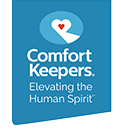Changes – Both Good and Bad
There’s much to enjoy about the transition from summer to autumn. The intense heat begins to subside, the leaves change color, and we ready ourselves for the holiday season. But like all other seasonal transitions, there’s a tradeoff, and with the positive changes come certain challenges to our health and safety. Seniors, in particular, are at risk around this time of year. Colder temperatures, the presence of influenza, and even fallen leaves can severely threaten seniors’ well-being and independence.
Older adults account for more than 50% of flu-related hospitalizations and more than 80% of flu-related deaths.
Fortunately, by following a few tips and best practices, seniors can stay safe and enjoy everything that the autumn season has to offer. Here are a few to share with senior clients.
Autumn Safety Tips
- Get the influenza vaccine: While the flu may not be as detrimental to the health of younger people, seniors are at risk from flu complications, such as pneumonia and bronchitis. These complications can result in serious illness, hospitalization, and even death. Adding to this, the flu can also worsen pre-existing conditions. Vaccines to consider include Fluzone High-Dose, Fluad, and Flublok Quadrivalent – but it’s important to talk to a physician or other healthcare professional about the most appropriate option.
- Reduce the risk of influenza: In addition to vaccination, it’s best to take additional steps toward reducing the risk of the flu:
- Avoid contact with those who are sick
- Wash hands with warm water and soap frequently throughout the day, or use alcohol-based hand sanitizer.
- Regularly disinfect surfaces that are likely to be contaminated
- Improve the immune system through regular exercise (with physician approval)
- Reduce fire risk: As the temperature falls, it’s common to start using space heaters or fireplaces to warm up the home. Seniors should ensure that flammable objects are kept far away from these types of appliances. It’s also important to inspect fire extinguishers to ensure they are in working condition, and that batteries are replaced in smoke detectors.
- Keep warm: While on the subject of dropping temperatures, it’s imperative that seniors protect themselves from the cold. Although autumn doesn’t present the same bitter weather as winter, there’s still a palpable risk. In fact, the National Institutes of Health reports that hypothermia can develop rather quickly after being exposed to relatively mild cold temperatures. Seniors should venture outside only when absolutely necessary. When they do, it’s important to dress in layers of loose-fitting clothing.
- Clear away the leaves: Though certainly pleasing to the eye, fallen leaves can easily cause seniors to slip and fall. They should be raked away from the driveway and sidewalks. This is especially important once they become slippery and soggy from the rain.
Comfort Keepers® Can Help
There’s a lot to enjoy when it comes to autumn. The professional care team at Comfort Keepers® wants to ensure that senior clients have the means to experience all the season has to offer. Our caregivers can help them with the safety tips above. We can also provide companionship, meal preparation, and mobility assistance – inside and outside the home. And if they aren’t able to drive to their destinations, we can help them get there safely.
Contact a Comfort Keepers location near you to learn more about our services.
References:
Medical Alert System Reviews. “5 Autumn Safety Tips for Seniors” by Susie Slack. Web. 2016.
Centers for Disease Control and Prevention. “CDC Says ‘Take 3’ Actions to Fight the Flu.” Web. 2018.
WebMD. “Flu Can Have Dangerous Domino Effect on Seniors” by Robert Preidt. Web. 2018.

